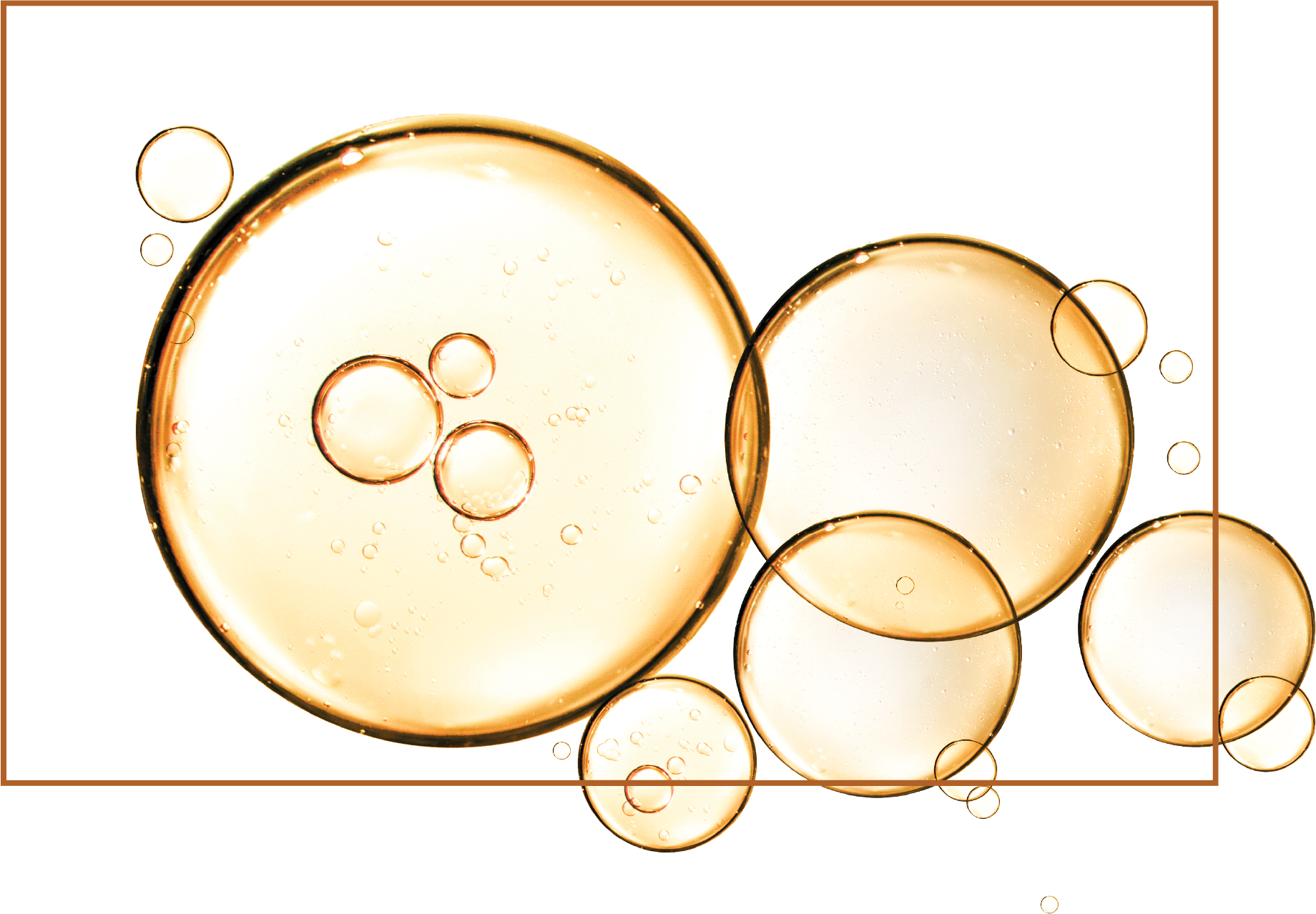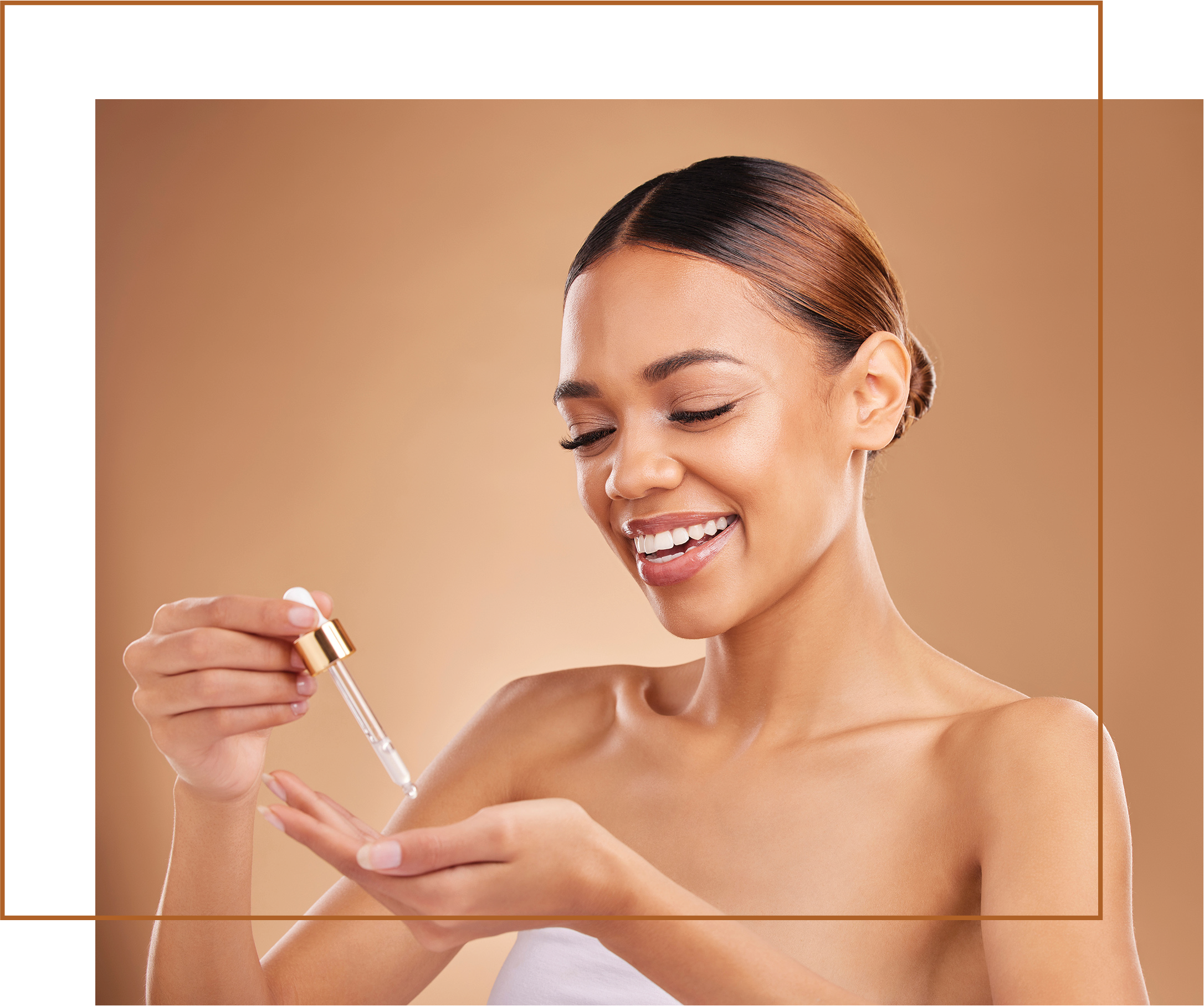Derma Serum
Skin Restoring Serum
Advanced topical living synbiotic that promotes a balanced skin microbiome with rejuvenating oils for youthful, glowing skin and healthy cells.
Advanced topical living synbiotic that promotes a balanced skin microbiome with rejuvenating oils for youthful, glowing skin and healthy cells.
Shake well, apply topically to the affected area 1-2 times per day, or as directed by your healthcare provider.
**Individual needs may vary; please consult your practitioner before altering the prescribed doses or protocols.

Probiotics for internal use have been extensively researched, and there has been significant exploration into probiotic species that support skin health when applied topically.1 The challenge with topical probiotics lies in keeping them alive long enough to reach the consumer. Utilizing multiple microbiology labs and years of expertise, the research team at Alimentum Labs has successfully addressed this challenge. When incorporated into this unique oil-based formula, these probiotic species remain viable. Consequently, this formula can directly reintroduce beneficial species to the skin, helping correct the skin’s microbiome and promoting overall skin health.
The skin’s microbiome is intricately connected to overall health conditions. Beneficial bacteria play a crucial role in promoting skin health, while an excess of harmful bacteria can result in a condition known as dysbiosis. Dysbiotic skin, characterized by an overgrowth of bad bacteria, can create an unstable environment for the skin. This phenomenon is becoming more prevalent due to our excessively sterile environments and constant exposure to environmental impurities and toxins.

The consequences of a dysbiotic environment can manifest in various health conditions, including acne, rosacea, psoriasis, dry skin, and more. Good bacteria, or probiotics, play a key role in regulating skin health. Derma Serum, for instance, contains beneficial bacteria that can support dry skin, diminish the appearance of wrinkles and signs of aging, address inflammatory complications, facilitate wound repair, address autoimmune concerns, tackle blemishes, and more.2 Additionally, maintaining a healthy skin microbiome can aid in combating bacterial, fungal, and viral skin conditions, while also reducing intermittent inflammation caused by allergies or sensitive skin.
This synbiotic blend features a rich assortment of beneficial oils and skin-focused nutrients, including the rare omega-7 fatty acid and ceramides. Together, these components offer several advantages for the skin, such as moisturization, anti-aging effects, protection, inflammation control, and wound support. Notably, Derma Serum also contains a protein that aids the skin in producing a compound known as β-defensin, a potent peptide responsible for safeguarding the skin.3
With all the benefits of an entire cosmetic superstore in one bottle, Derma Serum fits directly into any protocol for skin-related needs or anyone wanting vibrantly healthy skin.
Topical probiotics play a beneficial role in managing autoimmune skin conditions. By fostering a balanced skin microbiome, these probiotics help regulate immune responses, thereby reducing inflammation and alleviating symptoms associated with autoimmune skin issues. Their anti-inflammatory properties alleviate redness and discomfort, promoting a healthier skin barrier. Incorporating topical probiotics into skincare routines can offer valuable support for individuals managing autoimmune skin conditions, contributing to overall skin comfort.
Topical probiotics may provide a degree of protection against UV damage. They enhance the skin’s ability to defend against environmental stressors, including harmful UV rays, thereby reducing the risk of premature aging and sun damage. The antioxidant compounds in the unique oils also contribute to the protection against UV damage.
Probiotics on the skin can alleviate blemishes by regulating the skin’s microbiota. For individuals with red or blotchy skin, topical probiotics can be beneficial in minimizing redness as well. They work by reducing inflammation and controlling the overgrowth of blemish-causing bacteria, thereby supporting the skin’s natural healing processes and contributing to clearer, healthier skin.
Certain probiotics promote wound healing by accelerating the skin’s natural repair processes. They contribute to tissue regeneration, helping wounds to heal more efficiently and potentially reducing the risk of scarring.
Probiotics can support the skin’s elasticity and firmness, contributing to an anti-aging effect. They may help reduce the appearance of fine lines and wrinkles by promoting collagen production and maintaining skin health. The oils and antioxidants in Derma Serum also protect against and minimize fine lines and wrinkles.
Topical probiotics have moisturizing properties, helping to improve skin hydration. By supporting the skin barrier function, probiotics assist in retaining moisture, preventing dryness, and promoting a smoother complexion. Additionally, we have included specific oils and ceramides to take skin hydration to the next level.
These unique and powerful strains of probiotics are available exclusively through Alimentum Labs.
Staphylococcus epidermidis, a resident of the skin microbiome, is unique for its ability to coexist with the human host and maintain skin health. It competes with harmful microorganisms, forms protective biofilms, and metabolizes sebum to help prevent skin infections. This bacterium is part of a diverse skin microbiome where a balance of different microorganisms is crucial for overall skin health and immune response.4
Roseomonas mucosa MS18 has specialized adaptations that enable it to thrive on the skin’s surface, making it well-suited to the specific microenvironment of the skin. This adaptability sets it apart from other microbes that may not thrive as well under the skin’s conditions. It plays an active role in the complex interactions within the skin microbiome, contributing to the overall balance of the microbial community. Furthermore, its role in regulating inflammation and protecting against potential pathogens emphasizes its significance in supporting skin health. This sets it apart from microbes lacking similar functions in promoting skin well-being.5
A very important, non-pathogenic Staphylococcus bacteria within our normal flora, S. xylosus plays a vital role in maintaining a healthy diversity on our skin. Ubiquitous in nature, S. xylosus can be found in various niches, persisting in soils and on surfaces. S. xylosus has the ability to increase skin CD8+ IL-17A producing T cells, thereby enhancing our skin’s ability to fight infections.6 Additionally, research has shown that S. xylosus produces compounds associated with antibacterial and anticancer activities.7
Certain strains of bacteria serve as powerful and beneficial topical probiotics for the skin. They regulate the skin’s condition through various mechanisms, including the production of antimicrobials and anti-inflammatory compounds. In addition to its advanced exclusive probiotic blend, Derma Serum is further enriched with specific oils and essential vitamins that are crucial for the skin’s most vital functions.

Studies have shown that L. salivarius (previously known as Lactobacillus salivarius) is associated with a significant improvement in clinical atopic dermatitis. Modulating Th1/Th2 cytokine profiles is considered an important therapy for the treatment of atopic dermatitis in both adults and children.8
As a valuable species, often in short supply in adults’ GI tracts and skin, B. infantis produces essential B vitamins, helps regulate intestinal terrain, and aids in digesting milk products while also regulating skin inflammation. Topically, this strain of bacteria can support skin conditions such as psoriasis, dermatitis, acne and others.1,9
The topical application of commensal organisms (i.e. Roseomonas mucosa) can reduce the severity of atopic dermatitis, emphasizing the significant role of commensals in decreasing the colonization of pathogenic bacteria, especially Staphylococcus aureus. This reduction in pathogenic growth is crucial for individuals with atopic dermatitis as it can lower the risk of infections and skin complications.10
As a key microbe in a healthy skin microbiome, S. epidermidis plays an important role in regulating skin microbiota through the production of bacteriocins (natural inhibitors of other organisms).4 Derma Serum is the first probiotic to offer S. epidermidis.
According to science reports, this L. paracasei (previously known as Lactobacillus paracasei) produces biosurfactants that can interrupt the adherence of pathogenic biofilms to tissues. This helps reduce infections from common skin-irritating pathogens, thereby reducing inflammation.11
A soil-based, gram-positive probiotic species, famous for producing beneficial enzymes, possesses detergent qualities and can help ‘digest’ dirt and grime. It produces bacteriocin-like substances to naturally decrease the colonization of the pathogenic microbes Klebsiella pneumoniae and S. aureus on the skin and around wounds.12–14
A very important non-pathogenic Staph bacteria, part of our normal flora, S. xylosus helps maintain a healthy diversity on our skin. S. xylosus is ubiquitous and can be found in various niches, persisting in soils and on surfaces. Moreover, S. xylosus has the ability to increase skin IL-17A+ CD8 T-cells, enhancing our skin’s ability to fight infections.6 It has also been shown to produce compounds associated with antibacterial and anticancer activities.7
A rich source of full spectrum E and B vitamins that provide anti-aging and antioxidant protection to the skin while nourishing beneficial bacteria.15
An abundant source of essential GLA (Gamma Linolenic Acid), derived from the borage plant, deeply moisturizes the skin, making it supple. Its potent anti-inflammatory properties provide relief for autoimmune skin conditions and rashes, while also helping control blemishes caused by C. acnes bacteria. Borage oil supports skin regeneration, improves tone, and combats signs of aging with antioxidants. Suitable for various skin types, it regulates sebum production without causing excess oiliness.16,17
As a source of omega-3 and omega-6 fatty acids, including GLA (Gamma Linolenic Acid), hemp seed oil has an established reputation for supporting smooth skin, calming inflammation, and reducing redness. Its balanced properties make it suitable for various skin types, controlling excess oil without clogging pores. Packed with antioxidants like vitamin E, it fights free radicals and supports the skin’s defense against aging. The oil promotes skin regeneration, aiding in healing scars and wounds, while its gentle nature makes it suitable for sensitive skin. Hemp seed oil offers a natural and nourishing boost for overall skin health.18
A natural moisturizer used by Hawaiians for hundreds of years, kukui oil is extracted from the nuts of the kukui tree, providing a versatile skincare solution. Its rich essential fatty acids deeply moisturize the skin, promoting a soft and supple complexion. With anti-inflammatory properties, it soothes irritation and forms a protective barrier to maintain optimal moisture levels. Known for scar healing, sunburn relief, and support for conditions like eczema, kukui oil also offers antioxidant protection for overall skin health.19
As one of the main lipid classes present in the skin matrix, topical ceramides help restore the compromised skin barrier, which is crucial for alleviating skin conditions such as eczema, dermatitis, lesions, and related complications.20
Stimulates the skin’s production of antimicrobial peptides and enhances the functional activities of β-defensin, thereby helping reduce the growth of pathogenic bacteria that can cause skin inflammation and dermatological issues.21
As a potent source of omega-6 and omega-9 fatty acids, marula oil is famous for its skin nourishing properties and known to support the natural preservation of transepidermal water migration, making it an excellent moisturizer.22
Contains a special essential fatty acid, n-3 linolenic acid, which plays a significant role in regulating normal inflammation processes in the skin. Additionally, it serves as a source of the essential omega-3 fatty acid, alpha-linolenic acid (ALA).23
Supports skin health with its rich array of phyto-antioxidants and a full-spectrum vitamin E complex.24 Often included in hair products for its effectiveness in nourishing hair, it may also assist in blocking the unwanted effects of dihydrotestosterone (DHT), a hormone that causes hair loss.25
Contains unique nutrients, including the rare omega-7 fatty acid. It serves as a terrific cleanser and exfoliator of dead skin cells, and is cited to aid in the healing processes of sunburns and wounds.26
Provides a natural source of medium-chain triglycerides, a type of saturated fat that contributes to maintaining even skin tone.18
When used as directed there are no known contraindications for Derma Serum. However, we recommend that you consult your health care practitioner before applying to any open wounds or infected areas.
**It is always recommended that you consult your practitioner prior to adding any new supplement to your regimen if you are pregnant, breastfeeding, experiencing renal failure, undergoing an organ transplant(s), managing diabetes with insulin, or are taking medication(s) for any pre-existing conditions.**
All ingredients are tested before use for: